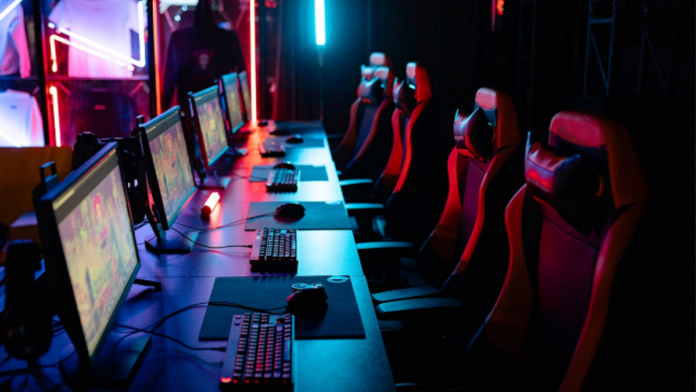As the world of competitive gaming continues to expand and evolve, the strategies employed by players, teams, and organizations are becoming more sophisticated. Competitive gaming has transitioned from a niche hobby to a global phenomenon, with millions of fans and players participating in various titles across genres. This article delves into the evolving strategies within competitive gaming, examining how technology, player development, and changing viewer dynamics are shaping the future of eSports.
Read More: ProcurementNation.com Shipping: A Comprehensive Guide to Streamlined Logistics
The Technological Revolution
One of the most significant drivers of change in competitive gaming is technology. With advancements in graphics, processing power, and connectivity, games are not only becoming more immersive but also more complex. This evolution necessitates the development of new strategies.
Data Analytics and Performance Tracking
Data analytics is transforming how teams approach gameplay. Organizations are now employing data scientists to analyze player performance and in-game statistics. This allows teams to identify strengths, weaknesses, and patterns that can be exploited during matches. For instance, in games like League of Legends or Dota 2, understanding the intricacies of hero matchups and item builds through data analysis has become crucial.
Moreover, performance tracking software can provide real-time feedback during matches, allowing players to adjust strategies on the fly. This shift toward data-driven decision-making is a game-changer, enabling teams to refine their strategies continually.
AI and Machine Learning
Artificial Intelligence (AI) and machine learning are also playing a pivotal role in shaping strategies. AI can analyze vast amounts of gameplay data far quicker than any human. Tools powered by AI can provide insights on opponent tendencies, enabling teams to craft tailored strategies that exploit weaknesses
For example, in first-person shooters like Counter-Strike: Global Offensive, AI algorithms can predict enemy movements based on past behavior, allowing teams to anticipate and counteract their strategies effectively.
The Evolution of Player Development
As the competition in competitive gaming intensifies, the way players are trained and developed has undergone a significant transformation. Gone are the days when players relied solely on natural talent and practice. Now, a holistic approach to player development is essential.
Mental Coaching and Well-being
Understanding the psychological demands of competitive gaming is critical for player success. Teams are increasingly hiring sports psychologists to help players manage stress, focus, and maintain mental resilience. Mental coaching focuses on strategies like visualization and mindfulness, which can help players perform at their peak under pressure.
Moreover, prioritizing player well-being is becoming a key aspect of team culture. The grueling schedules and high stakes of competitive gaming can lead to burnout. Teams that foster a supportive environment and prioritize work-life balance often see better performance from their players.
Cross-Training and Skill Diversification
As the landscape of competitive gaming becomes more competitive, the importance of versatility cannot be overstated. Players are now encouraged to cross-train in different games or roles, broadening their skill sets. This diversification allows for greater adaptability during matches, enabling players to fill multiple roles as needed.
For instance, a player accustomed to playing a support role in one game might transition to a more aggressive position in another, providing their team with a tactical advantage. This flexibility can be crucial in high-stakes situations where traditional roles may not suffice.
Changing Viewer Dynamics
The growth of competitive gaming has brought about significant changes in how viewers consume content. Streaming platforms like Twitch and YouTube have revolutionized the way fans engage with their favorite games and players. This shift is influencing strategies both on and off the battlefield.
Community Engagement
Competitive gaming teams are recognizing the importance of community engagement in building their brand. Players are encouraged to interact with fans through social media, live streams, and community events. This connection not only fosters loyalty but also creates a supportive ecosystem that can contribute to a team’s success.
Additionally, the rise of fan-driven content, such as user-generated highlights and analysis, is shaping the way strategies are shared and discussed within the community. Fans are becoming more knowledgeable about the games, which can put pressure on teams to continuously innovate their strategies to stay ahead of a savvy audience.
Content Creation and Branding
With the increasing popularity of competitive gaming, teams are investing more in content creation. This involves producing behind-the-scenes videos, player interviews, and educational content that showcases strategies and gameplay mechanics. Such content not only entertains but also serves to educate viewers, enhancing their understanding of the games and the intricacies of competitive play.
Branding has become another crucial element of success in competitive gaming. Teams that can effectively market themselves and their players can secure lucrative sponsorship deals and increase their visibility. This commercial aspect is driving organizations to adopt innovative strategies that extend beyond gameplay, encompassing marketing and community engagement.
The Globalization of Competitive Gaming
The globalization of competitive gaming has introduced new challenges and opportunities. With players and teams emerging from various countries, the competitive landscape is richer than ever.
Cultural Adaptation
As teams compete on an international stage, understanding cultural nuances has become essential. Teams are learning to adapt their strategies not just in terms of gameplay but also in how they communicate and engage with diverse audiences. This includes tailoring marketing strategies and fan interactions to resonate with different cultures.
Regional Leagues and Ecosystems
The establishment of regional leagues is another trend shaping the future of competitive gaming. These leagues create localized ecosystems that foster talent and engagement. Teams can cultivate a dedicated fanbase while also developing homegrown talent, which can be a sustainable strategy for long-term success.
Conclusion
The future of competitive gaming is marked by continuous evolution. As technology advances, player development becomes more comprehensive, and viewer engagement deepens, strategies are becoming increasingly sophisticated.
